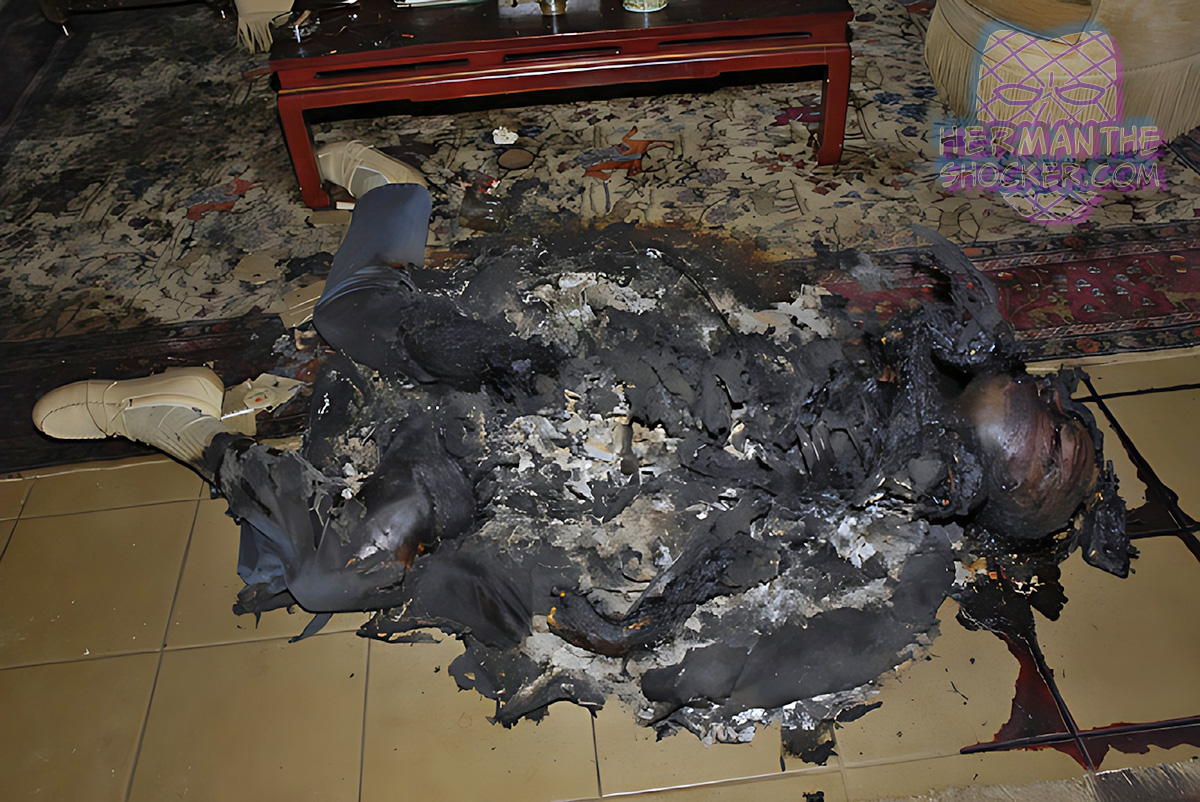Switzerland. In October 2006, around 12 a.m., the Geneva Police Department police were informed that the body of an adult male was found dead at his home. He was a 55-year-old widower who lived alone with a dog. His daughter had not heard from her father for three days and had tried calling him on his cell phone several times unsuccessfully. He was a heavy smoker and suffered from high blood pressure and epilepsy. He had not had any seizures for several years and was used to taking a pill of flurazepam before bedtime, prescribed by his general practitioner.
In the living room, there was a charred body lying on the floor. The body was almost completely consumed between the knees and the mid-chest. The head, lower legs, and feet were only slightly damaged. The upper limbs were partially burned. The abdomen, pelvis, genital area, and upper legs were completely incinerated. As for the bones, including the ribs and vertebrae, they were reduced to a grey powder and were unrecoverable. The lower legs and feet were relatively intact, still donning socks and shoes.
The remains of the body lay on a carpet, next to the sofa and a small table. The body had probably been sitting in a chair, which was almost completely burned. The carpet ‘‘around’’ the body was undamaged and only the part in direct contact with the body was burned. The head lay on the tiled floor, which showed some trails of a reddish and bloody fluid. The same reddish and bloody fluid was present on the face, near the nostrils, and on the frontal region. The surroundings were intact; the wood furniture, armchairs, sofa, and small table next to the body were undamaged but coated with a greasy, yellowish residue.
On the carpet next to the body, there was a cigarette lighter, a pair of glasses, an empty drinking glass, a partially burned packet of cigarettes, and an ashtray containing a cigar stub. On the table in the living room, some meters away from the body, there was a cigarette lighter, a black leather wallet, and some perfectly arranged documents. All these were coated with the same greasy, yellowish residue. The windows of the house were all closed. The circumstances herein described seemed to be peculiar though not truly suspicious and the body was carried to the Geneva Medico-Legal Centre to undergo the necessary investigation. Toxicological analyses were carried out on the blood from the legs and showed low levels of desalkylflurazepam (consistent with the prescription). Carboxyhaemoglobin levels were 12%, cyanide concentration was 0.05mg/L, and alcohol concentration was 1.10%. Because of the extensive damages sustained by the body, no conclusions were drawn as to the cause of death.
Several cases of ‘‘spontaneous human combustions’’ have been described over the last few decades and centuries. Such cases have even been reported in the literature. The mechanism of the combustion could be from a modest external flame source (cigarette or cigar) that may have charred clothes in a specific location, where the skin would have split, releasing subcutaneous fat. The subcutaneous fat could then have been absorbed into a porous substrate (burned clothes) and have fuelled the combustion for as long as the fuel was available.
Latest posts








